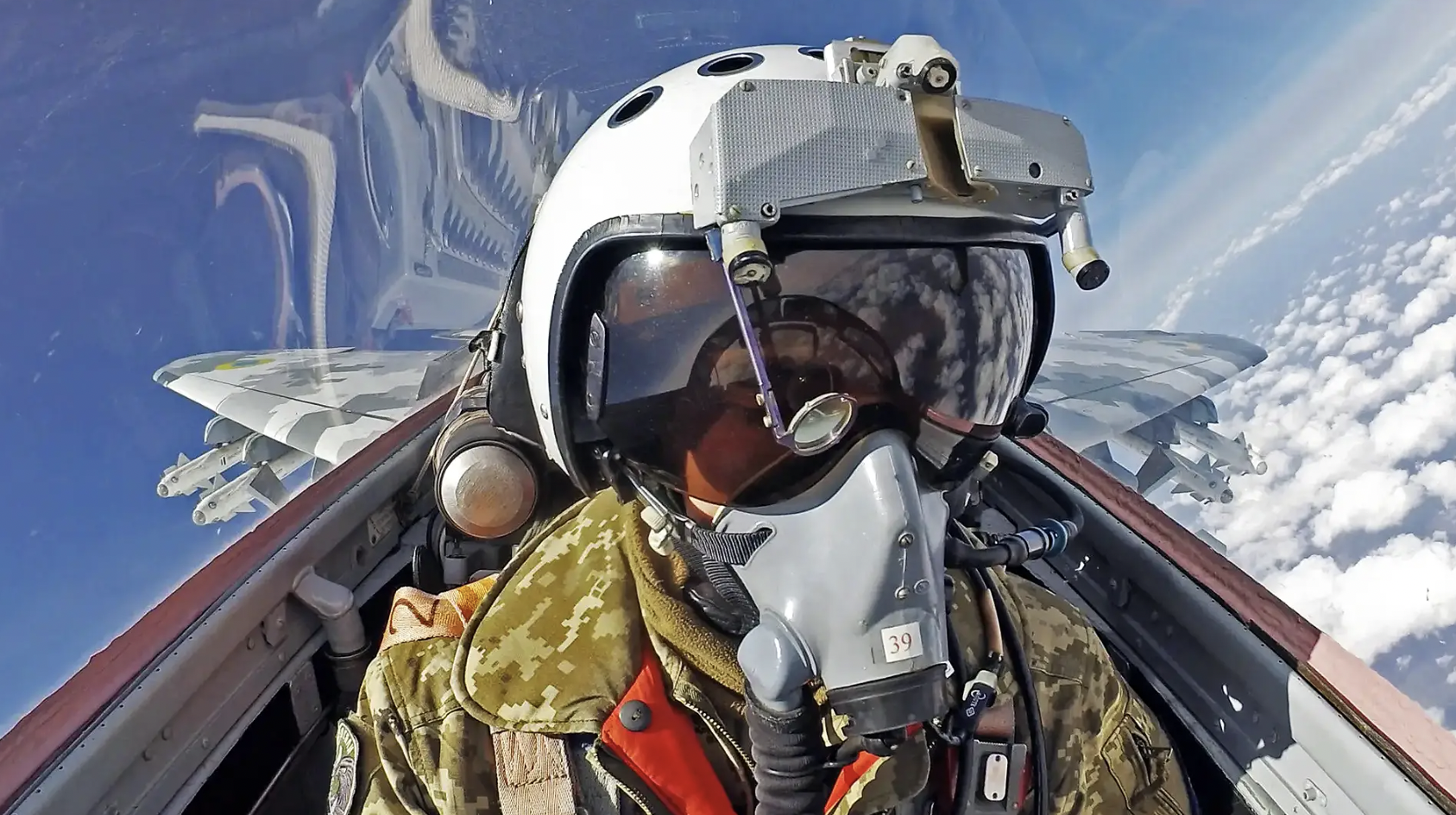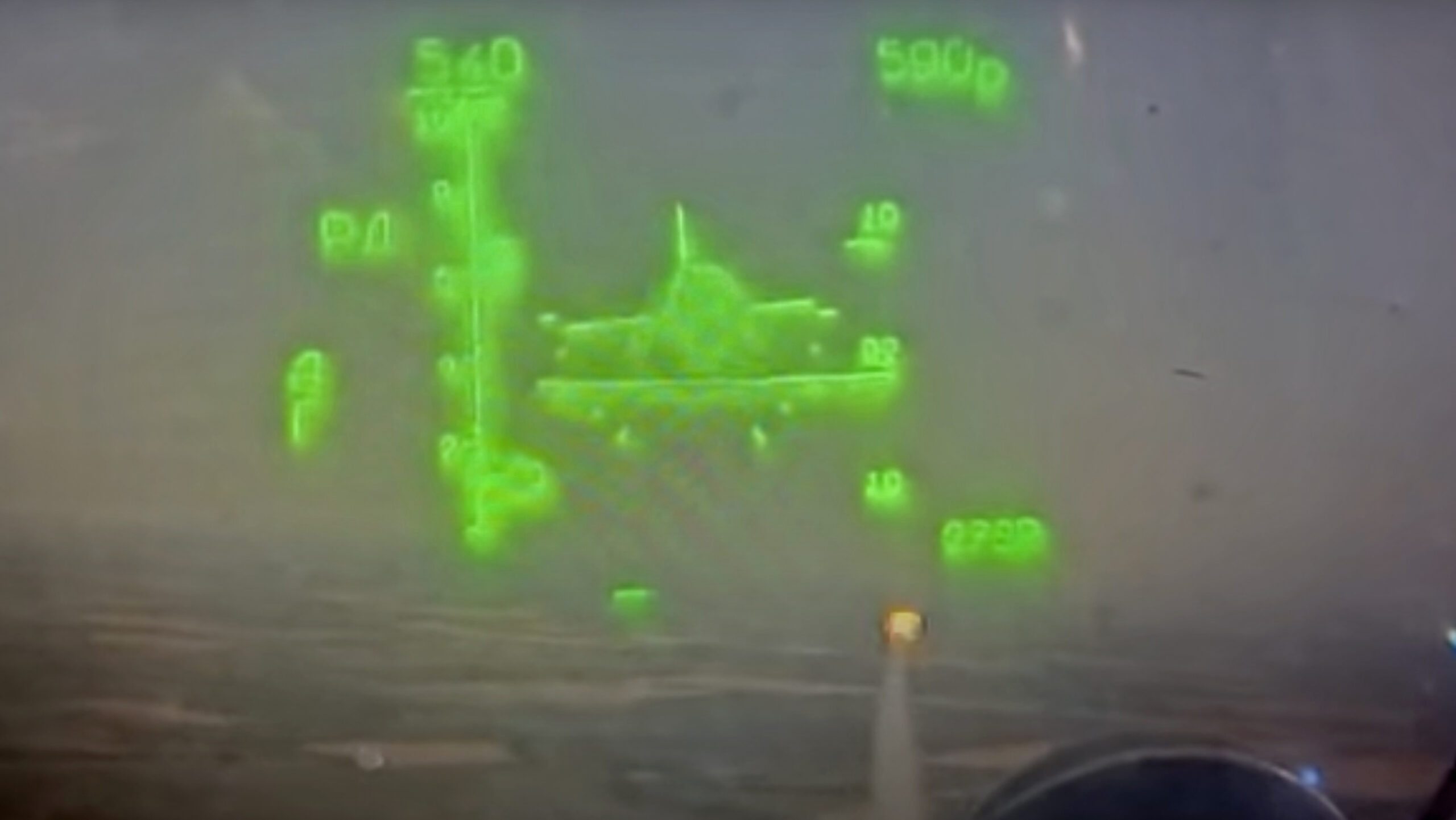There’s no doubt that the air war over Ukraine has been intense, with no shortage of aerial engagements involving a wide range of different aircraft and targets. But imagery showing actual air-to-air encounters has so far been very rare. Now the Ukrainian Air Force has released a video from the cockpit of one of its MiG-29 Fulcrum fighters, as it successfully shoots down what’s said to be a Russian Orlan drone.

The video, which is undated and provided without any suggestion of location, was posted on the Militarnyi Videonews YouTube channel, before being included as part of an article from Militarnyi remembering the famous MiG-29 pilot, Andrii Pilshchikov, better known as “Juice,” who had previously provided The War Zone with several in-depth accounts of the air war.
It’s not clear if the video in question, running to 48 seconds in length, shows one of Juice’s engagements, although the Militarnyi story suggests that’s a possibility. “His skill was high, he could hit such small targets as the Orlan reconnaissance drone, which compared with the MiG-29 seems microscopic,” the article notes.

What we can see, however, is some of the symbology on the MiG-29’s head-up display (HUD). While the quality is low, it’s possible to make out the speed of the aircraft, shown at the top left. The video starts with the jet flying at 550 kilometers an hour, before dropping slightly to 530 km/h by the end of the engagement. These values are equivalent to approximately 300 and 280 knots, respectively.
The figure at the top right, meanwhile, shows the altitude of the MiG-29, apparently ranging between 560 and 610 meters. This equates to roughly 1,800 to 2,000 feet.
On the left of the HUD, next to the scale marker that shows acceptable missile launch parameters, the letters RL appear (in Cyrillic), indicating that the radar is switched on.

At the 27-second mark, another two letters appear centrally, toward the bottom of the display. These are PR (again, in Cyrillic) and show the pilot that the missile launch has been authorized — they are now free to launch a missile. When that same symbol starts flashing, it indicates that locking is in progress. Although that’s not immediately apparent, likely due to the low quality of the video, the missile launch authorization symbol is soon followed by a missile streaking ahead of the MiG and detonating in a fireball in front of the jet and in close proximity.

Based on the symbology at the bottom right of the HUD, the weapon appears to have been a radar-homing R-27 series air-to-air missile, known to NATO as AA-10 Alamo, in particular, an extended-range R-27ER version. This weapon has a maximum range of 59 miles and is hardly optimized for taking out relatively tiny drones: Seeker limitations mean pilots have to approach the drones at ‘danger close’ range.
On the other hand, as we have seen repeatedly in Saudi Arabia’s campaign against Houthi drones, a radar-guided weapon like the AIM-120 Advanced Medium-Range Air-to-Air Missile (AMRAAM) is often considered a more reliable means of scoring a kill compared to an infrared-guided weapon like the AIM-9 Sidewinder — or the R-73 (AA-11 Archer) used by Ukraine. The limited thermal signature of these drones means heat-seeking missiles such as these will not always manage to achieve a lock-on. Of course, all of these missiles represent a very expensive way of countering what’s essentially a very low-cost threat.

A Russian MiG-29 uses an R-73 series missile to shoot down a Georgian Hermes 450 drone in 2008:

As for the drone that was destroyed, this is reportedly an Orlan-series type. These small drones are primarily used for artillery spotting, and these have been used by Russian forces in Ukraine since well before the full-scale invasion of February 2022. Since then, they have also been adapted to carry electronic warfare payloads, according to Russian reports.
It was Juice who provided The War Zone with some of the most in-depth accounts of battling Russian drones in the skies over Ukraine, including the notorious Iranian-supplied Shaheds. These entered the war only after Russia started using cruise missiles, after which both types of weapons were used to bombard key military and civilian infrastructure targets.
“I mentioned before about cruise missiles and the situation with drones is even worse, especially during the nighttime,” Juice said, in December last year. “It’s very difficult to search and track and to engage these types of threats.”
Small and slow-flying like the Shahed, the Orlan is also a very tricky target for a fighter like the MiG.

As Juice explained, even generating a firing solution on a small-sized drone is difficult, with the picture on the radar screen looking deceptively similar to a flock of birds, or a truck moving along a road.
In the case of ‘kamikaze’ drones like the Shahed, these are normally encountered at night, while the Orlan typically flies in daylight hours, as in the interception video.

As for the engagement distance, with the drone seemingly very close to the MiG that fired upon it, this is a reality that Juice also previously reflected upon. He observed that the Soviet-era missiles in current Ukrainian use can normally engage small drones at distances of “only a few kilometers, depending on altitude and speed.”

While using fighters to tackle small drones is by no means easy, Ukraine’s ground-based air defenses have also struggled with these targets, which are not only hard to shoot down but also difficult to detect in the first place. Above all, drones flying at ultra-low altitudes require very extensive radar cover, on a scale that is technically and economically unfeasible.
It’s for this reason that Ukraine has begun to establish visual surveillance posts, together with an app with which civilians can submit their own drone warnings. At the same time, extensive use has been made of mobile fire groups, often using pick-ups or small trucks armed with powerful spotlights and laser pointers, heavy machine guns, cannons, and man-portable air defense systems (MANPADS).
With a relentless drone war being waged by both sides in the war in Ukraine, the threat posed by these kinds of uncrewed aircraft is only set to increase. Clearly, Soviet-era fighters such as the MiG-29 are still capable of shooting down smaller drones, but they are not ideal for the job. At the same time, the supply of Western ground-based air defense systems will help, but these cannot provide anywhere near the kind of coverage offered by jets. With that in mind, the Ukrainian Air Force will be looking forward to the expanded capabilities offered by the F-16 fighters that it’s now set to receive, which are better equipped to tackle smaller targets thanks to their superior radar.
Contact the author: thomas@thedrive.com
